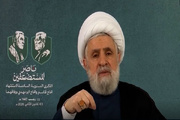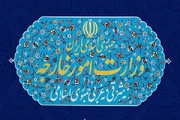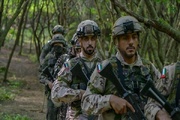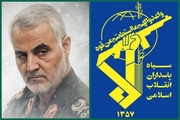The development of international railway lines is very important in the expansion of trade relations, and the North-South rail corridor is one of the important international and transnational projects, which will be completed with the implementation of four prioritized railway projects: Chabahar-Zahedan, Shiraz-Busher-Asaluyeh, Doroud-Khorramabad, and also Rasht-Anzali-Astara. With the connection of these rail links, Iran's railway will be connected to Azerbaijan, Russia, and then Europe.
With a length of 164 kilometers, the Rasht-Astara railway line is one of the most important rail projects, which is a suitable platform for international exports. The completion of the north-south corridor, especially the connection of the Rasht-Anzali-Astara railway line, is so important and vital that even the Leader of the Islamic Revolution Ayatollah Seyyed Ali Khamenei emphasized speeding up this project. Iranian President's concerns regarding speeding up the implementation and completion of this project on the one hand, and the Russian authorities' enthusiasm in this regard on the other hand, have caused the completion of the Rasht-Astara railway project to become a transnational demand.
The importance of developing country's transportation network
The Rasht-Astara Corridor is a bridge connecting European countries with the Indian Ocean and the Persian Gulf. The 7200 km long network of highways, sea routes and railways makes the North-South international transport corridor the shortest communication route (about 35 to 37 days) between Russia and India.
The North-South Corridor would provide India with more direct access to Central Asia and Russia, while allowing Iran to become a regional transit hub.
The North-South Corridor can be a serious competitor to the Suez Canal in trade between East and West. The cost of transporting goods in transit through this route is 30% cheaper than other routes in the region, and the time of transporting Indian goods to Russia is reduced by half through the Suez Canal.
The geo-strategic importance of the North-South Corridor, which was of attraction even before the war in Eastern Europe and the insecurity of Russian ports in the Black Sea, came more into concern with the energy crisis and the grain crisis caused by the war in Ukraine.
In general, the countries in Central Asia and the South Caucasus are facing a severe lack of space in the development of trade relations with each other, and any opportunity to develop trade relations between them, especially in the field of transportation, will be welcomed by these countries.
Advantages of the Rasht-Astara corridor
In addition to the development of international transit and the use of territorial capacities, the completion of the North-South Corridor is a source of stable income for Iran. It is expected that with the operationalization of the North-South corridor, Iran will be able to earn about 20 billion dollars annually from this transit route, which can partially reduce the country's dependence on oil revenues.
The transit capacity of the North-South Corridor is 30 million tons per year, but currently, Iran is using 2 million tons of this capacity.
If Iran achieves its goal of becoming a regional hub, it will not need to sell crude oil and minerals, and the benefits gained through transit and tourism will make the country unnecessary to sell crude oil and minerals.
About 250 billion dollars of Indian, Chinese and East Asian products will be transported from this corridor to Europe. Iran's share in goods is expected to be about 4% in transit and about 15% in production.
The completion and launch of this large international project will change Iran's position in the international economy from the export of "raw materials" to the position of "transit".
This corridor is one of the most important communication routes between Eurasia and the Persian Gulf, which can play an important role in the transit of goods of regional and extra-regional countries, considering the approach of the 13th government on neighborhood diplomacy and the development of communication and relations with regional countries.
Using the transit capacity of corridors and regional organizations such as the Shanghai Cooperation Organization and etc. is among the important measures of Iran's 13th government to expand economic diplomacy and advance the strategy of strengthening relations with the neighbors in line with national interests.
Iran, Russia finalize executive documents for starting Rasht-Astara railway project
Iran Minister of Roads and Urban Development, Mehrdad Bazrpash in meetings with Russian Deputy Prime Minister Alexander Novak and Minister of Transport of the Russian Federation Vitaly Savelyev stressed the need for increasing cooperation between the two countries and using the existing capacity in combined transportation using sea and rail transportation through the Caspian-Rasht railway.
"With the completion of 35 km from Rasht railway to Caspian port in the near future, this port will be connected to the southern ports of Iran in the Persian Gulf, especially Bandar Abbas port, through the rail network, which will be an important development in combined transportation with Russian ports in the north of the Caspian Sea," Bazrpash said.
Referring to Iran's hosting of Russia's first Ro-Ro cargo ship, Bazrpash considered the matter a big step in maritime trade between Iran and Russia and stated that the understanding between Iran and Russia is important for shipbuilding in the Caspian Sea.
"Expanding the transit capacity of the maritime route through the north-south corridors along the western Caspian Sea and the eastern Caspian Sea can also be effective in reducing heavy land traffic in the Caucasus," he added.
Vitaly Savelyev, for his part, said that the completion of the North-South rail corridor is of particular importance, which will be done through the construction of the Rasht-Astara railway, and Russia is determined to facilitate and help the construction of this project.
The cooperation documents on the construction of the Rasht-Astara railway between Iran and Russia were finalized during these meetings.
Details of Rasht-Astara railway construction contract
Mohammad Jamshidi, the Iranian president's deputy chief of staff for political affairs, recently said, "The Rasht-Astara railway line practically completes the North-South transportation rail corridor that connects Southeast Asia, India, and the Persian Gulf to Russia through Iran and Caucasus, and from there it will be connected to the Gulf of Finland and finally to Northern Europe."
The important point is that much cargo spread in Europe through the north of this continent, he added.
Jamshidi went on to say that the project is one of the main priorities of the Iranian government's foreign policy and its pursuit has two strategic and economic reasons.
Noting that Iran's enemies, including the United States, are trying to bypass Iran's soil so that none of the communication, transportation and even energy lines pass through Iran's soil, Jamshidi said that since the issue had to be resolved, the Iranian government pursued this strategy.
Iran is trying to cross various transit routes through Iran, one of those being the north-south route, which is 7,200 km of railway, according to him.
Saying that in nearly 162 km, the distance between Rasht and Astara, the lack of rail lines caused some difficulties, Jamshidi stressed that Iran does not have the capacity to exploit economic benefits, so it sought to preserve its geopolitical value and follow up on this issue.
"US National Security Advisor in one of his speeches in the United States said that they're seeking to, through the southern Persian Gulf, connect South Asia to the Israeli regime and from there, to Europe and the Mediterranean Sea. Therefore, they are also looking to pass the transportation route from a place that bypasses Iran and pursues their political goals, so the approach followed by the (Iranian) government and the country is absolutely correct from a strategic point of view," Jamshidi continued.
Speaking of the economic benefits of this project, he stated that this event will provide job offers and strengthen trade and transportation in the country.
When this project is completed, it will have a significant foreign income for Iran, he added.
Role of international corridors in expansion of transport market
The North-South Corridor is one of the most important transit routes of the country, which will play a significant role in the expansion of Iran's foreign transportation market. The importance of this corridor has doubled since the start of the war in Ukraine.
Despite the requests of the governments and the private sector of Iran and Russia, the logistics connections between the two countries are still far from the desired level.
The only option that can connect the northern and southern ports of the country by rail and with a high operating volume in the short term is connecting the rail network to the Caspian port. The project, which has achieved 72% overall progress and 85% progress in infrastructure, needs only a 7000-billion-Rial budget for completion.
The completion of the project requires coordination between the related organizations.
MP/5781901

























Your Comment